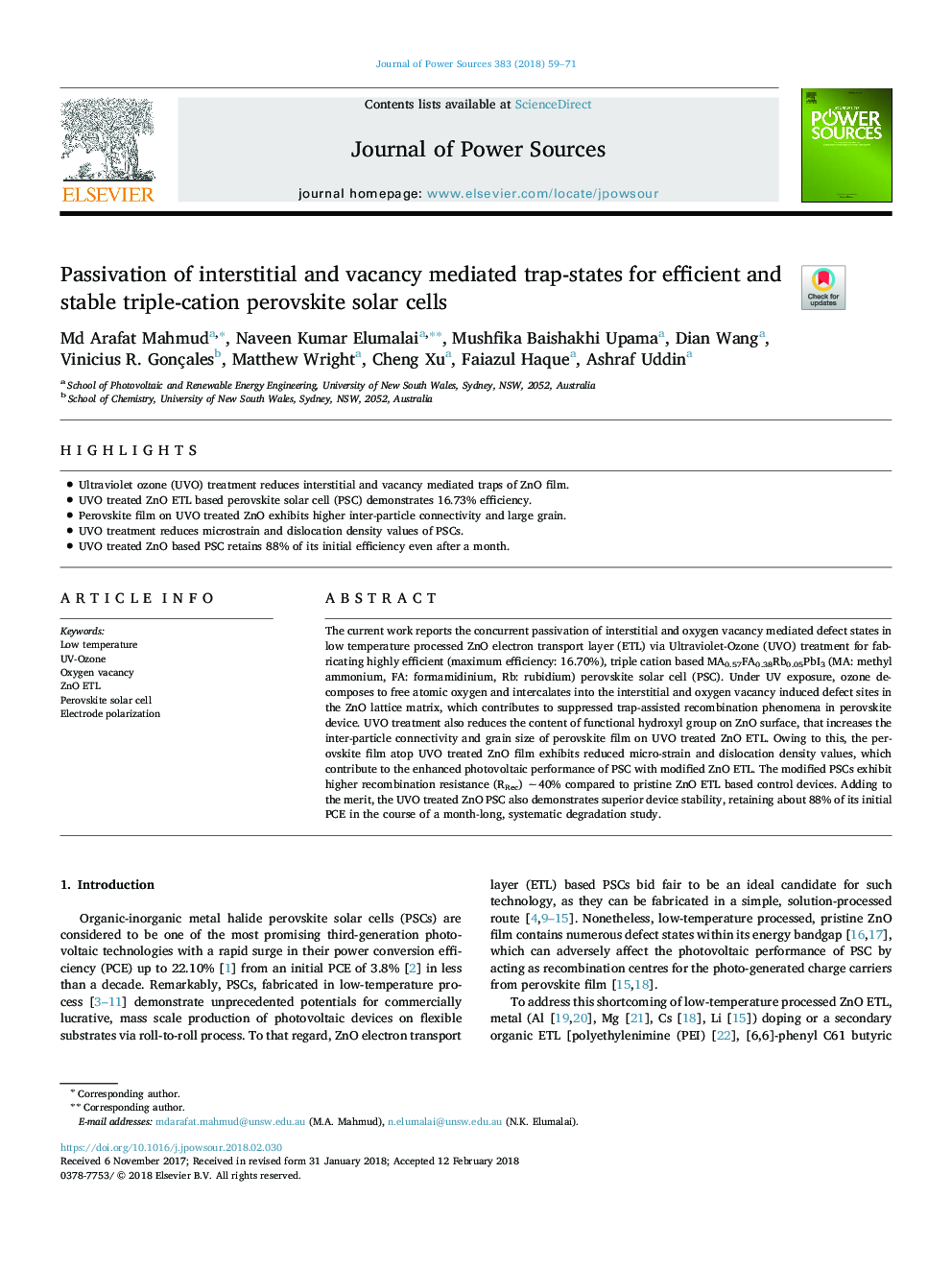| Article ID | Journal | Published Year | Pages | File Type |
|---|---|---|---|---|
| 7725445 | Journal of Power Sources | 2018 | 13 Pages |
Abstract
The current work reports the concurrent passivation of interstitial and oxygen vacancy mediated defect states in low temperature processed ZnO electron transport layer (ETL) via Ultraviolet-Ozone (UVO) treatment for fabricating highly efficient (maximum efficiency: 16.70%), triple cation based MA0.57FA0.38Rb0.05PbI3 (MA: methyl ammonium, FA: formamidinium, Rb: rubidium) perovskite solar cell (PSC). Under UV exposure, ozone decomposes to free atomic oxygen and intercalates into the interstitial and oxygen vacancy induced defect sites in the ZnO lattice matrix, which contributes to suppressed trap-assisted recombination phenomena in perovskite device. UVO treatment also reduces the content of functional hydroxyl group on ZnO surface, that increases the inter-particle connectivity and grain size of perovskite film on UVO treated ZnO ETL. Owing to this, the perovskite film atop UVO treated ZnO film exhibits reduced micro-strain and dislocation density values, which contribute to the enhanced photovoltaic performance of PSC with modified ZnO ETL. The modified PSCs exhibit higher recombination resistance (RRec) â¼40% compared to pristine ZnO ETL based control devices. Adding to the merit, the UVO treated ZnO PSC also demonstrates superior device stability, retaining about 88% of its initial PCE in the course of a month-long, systematic degradation study.
Related Topics
Physical Sciences and Engineering
Chemistry
Electrochemistry
Authors
Md Arafat Mahmud, Naveen Kumar Elumalai, Mushfika Baishakhi Upama, Dian Wang, Vinicius R. Gonçales, Matthew Wright, Cheng Xu, Faiazul Haque, Ashraf Uddin,
